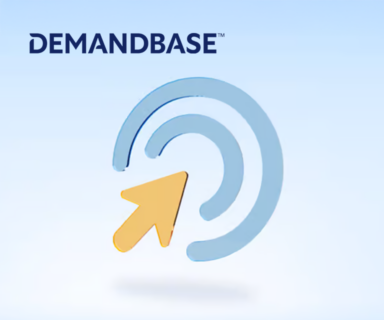 Based on the webinar: Delivering on The Promise of Intent: Applying Real Insights to Accelerate Marketing & Sales Results.
Based on the webinar: Delivering on The Promise of Intent: Applying Real Insights to Accelerate Marketing & Sales Results.
The purchase intent data ecosystem is evolving quickly, with a growing range of data sources and data providers now available. Purchase intent data promises access to undiscovered demand to drive a higher volume of qualified opportunities through the pipeline, so it’s easy to see why organizations are adopting it into their go-to-market strategies. But despite the amazing growth, many organizations trying out purchase intent data remain unsure of how to adjust to it or optimize effectively to achieve better results faster.
At the recent Demand Gen Report Buyer Insights & Intelligence virtual session, TechTarget’s SVP of Products Andrew Briney and VP of Market Development Jillian Coffin discussed how organizations can better implement intent to maximize their opportunities and revenue. They highlighted some of the common challenges and explained how you can overcome them.
#1. You don’t know what information is actually contained in the data.
The first step to successful purchase intent data use comes before you select it, and certainly well before you look to introduce it into your processes and teams. To truly understand the insights any particular source can provide (and therefore how you can take advantage of them), you need to understand what context and interactions it comes from. The most actionable intent data helps you see the real people involved, and it precisely explains what their actions have been. Other sources may not be able to show the context of the behavior (what were they actually doing?), the identifiable individuals involved, or the specifics of their behavior. Many sources cover only hints of behavior at the account level.
For example, the TechTarget version of intent comes from directly observed user behavior. Via our huge libraries of purpose-built B2B technology content, we’ve created communities that attract B2B tech buyers looking for guidance. Thus, we’re able to show what’s happening at the individual level, among buying-teams as they coalesce, and at the account overall. Likewise, because this behavior is occurring within our owned and operated internet properties, the context is completely visible and understandable.
If you’re already using purchase intent data and don’t know its source or if you’re researching different intent data providers, here are some critical questions you can ask to better assess what you’ll be able to expect from it:
- How can the data refine your understanding of which accounts are truly in market right now?
- How will you establish who at those accounts is actually part of a real buyer’s journey? And what specifically do they care about that’s relevant to you?
#2. Your complex tech stack isn’t designed to handle fast-changing behavioral data very well.
Because purchase intent data is still very new, many of the technologies in a tech stack and the associated processes were not set up to leverage it well. If you proceed blindly, this can make for early difficulties that result in disappointing initial outcomes.
While as yet there’s no Easy button, there are strategies to better ensure positive momentum from the start. For organizations just starting with purchase intent data, we recommend working the objectives from both ends of your go-to-market value chain or funnel – which means getting both Marketing and Sales directly using intent data early.
As with any new solution category, with intent data it can be tempting to want to begin very gingerly, to “test the water.” With intent, this often takes the form of Marketing uploading a group of as-yet unengaged contacts and then slowly beginning to drip nurture them. But precisely because this strategy takes so long to move contacts down the qualification funnel, an organization that does only this ensures it will at best see only a few early wins coming out the other end.
In contrast, in parallel to Marketing’s efforts, we’ve seen greater success come from involving Sales resources early. This is executed by having SDRs also log directly into the intent data system so that they can also see and engage active researchers. In this way, Sales can make progress faster – i.e., they can start getting appointments even though Marketing nurture may have yet to deliver significant MQLs. By getting the Sales organization involved like this quickly, success occurs faster as well.
#3. You haven’t implemented purchase intent data best practices.
With the best purchase intent data, there’s a broad number of use cases that can be supported. The key to implementation success is to have a clear understanding of what specific, granular objectives Marketing and Sales each wants to prioritize from the start. From there, you’ll want to be sure that the appropriate education and even hands-on training are made available to the teams you support. While it may seem obvious, since this data is new to your constituencies, getting those teams using the data on a regular basis has to be a major focus.
Intent data is potentially very valuable because it can make you much smarter about who’s in market and what they actually care about. But with that said, you’ll want to be sensitive to how you handle that knowledge. You never want to seem creepy or like you’ve been stalking them. Instead, you’ll want to think about how you can best use the insights. You’ll want to do some pre-work on the enablement side towards delivering more productive and timely buyer conversations. You’ll want to ensure you’re speaking to buyer’s challenges in the right way and at the right time.
By monitoring purchase intent data at an account, you can let the actual buyers’ real activities guide you – you’re no longer restricted by the limits of persona models and limiting role/function filtering. This is important as buying teams increase in size and their titles quickly evolve away from what your historic data can show. Valuable opportunities can crop up in unexpected places and with unexpected people. Now you will see that happening. You don’t want your team or your colleagues to miss out.
For organizations looking to gain a competitive edge, when sourced wisely and used effectively, real purchase intent data can provide huge advantages. To better understand how to implement your near-term objectives, TechTarget can help.




